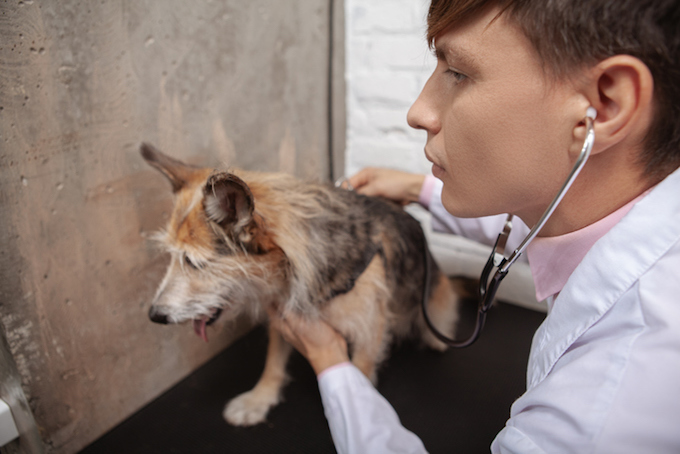Cardiac electrical failure in dogs involves a problem with electrical signals in the heart. The condition can affect a dog’s heart health significantly.
Generally, the condition is often discovered alongside another medical condition.
Technically, the condition is also called heart impulse block.
If you see the signs of cardiac electrical failure in your dog, then get to a veterinarian for a proper diagnosis and treatment.
Here’s what you should know about the symptoms, causes, and treatments for the condition.
Symptoms of Cardiac Electrical Failure in Dogs
The condition sometimes does not produce any visible symptoms. This is called being asymptomatic. However, some of the symptoms that might be seen include:
- Low heart rate
- Fainting
- Shortness of breath (especially after exercise)
- Acting lethargic
- Pale gums
Causes of Cardiac Electrical Failure in Dogs

The cause of the condition can be a number of things. For instance, some of the most common causes include:
- Myocarditis
- Sick sinus syndrome (SSS)
- Electrolyte problems
- Cardiac lymphoma
- Toxicity from drugs (especially digoxin)
- Muscular dystrophy
Treatments for Cardiac Electrical Failure in Dogs
Firstly, your vet will ask about your dog’s symptoms. Secondly, your vet will ask about your dog’s full medical history. This is to help discover any underlying conditions.
Thirdly, a full physical examination will be carried out. Blood and urine tests will be taken. Additionally, an electrocardiogram (ECK) can help to identify issues with your dog’s heart and confirm the condition.
Generally, treatment will depend on the severity of the condition. For example, in some cases, a pacemaker can be fitted to your dog. This will help to regulate their heart’s performance.
Additionally, in many cases, your dog’s exercise might need to be restrained. Your vet can help to formulate a safe exercise plan while your dog recovers from treatment.
Finally, it’s vital to keep up regular vet visits while your dog recovers. This is to stay on top of monitoring how well their heart is working.
Have you ever cared for a dog who suffered from this condition? How did your vet help your dog recover? Let us know in the comments section below.









